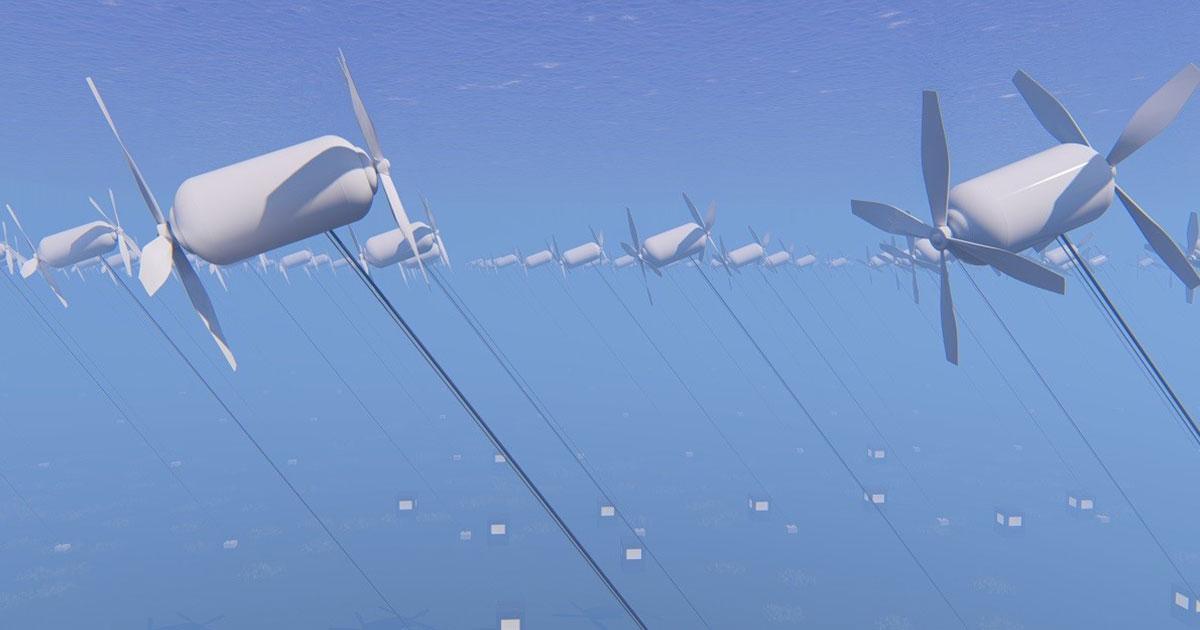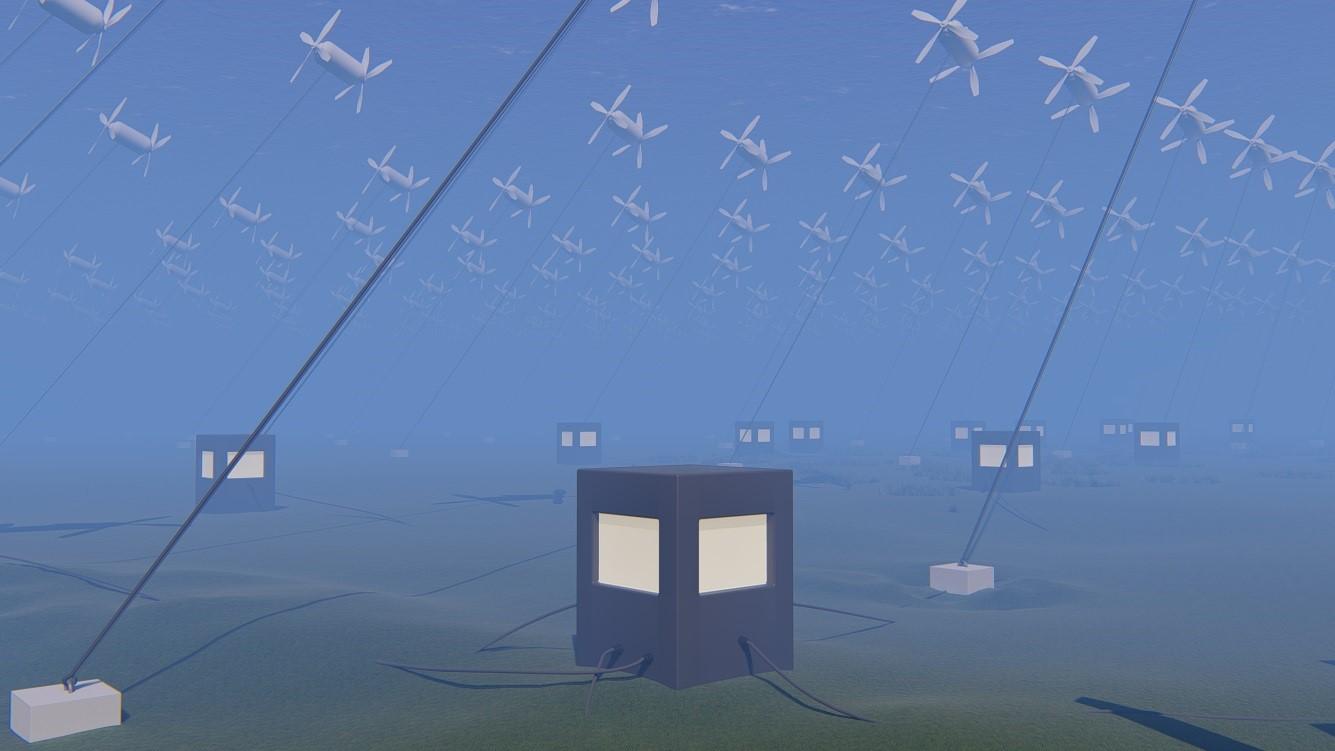The Gulf Stream Energy ‘Gold Rush’ Sets Standards for Renewables Future

The global energy industry has undergone a major shift in the last decade, with everything from traditional grid systems, energy consumption levels and energy sources coming into question.
 In a recent survey by RE100, 70 percent of respondents state they want America to produce 100 percent of its energy from renewable sources, marking a notable shift in perception and move away from fossil fuel reliance in the US.
In a recent survey by RE100, 70 percent of respondents state they want America to produce 100 percent of its energy from renewable sources, marking a notable shift in perception and move away from fossil fuel reliance in the US.
One factor encouraging this shift has been the advancement in renewable power technology and accessibility. Increased grid flexibility required to integrate high levels of renewable generation into national supply is developing at a rapid pace; opening up opportunities for new sources of power for both communities and the corporate world.
Although wind turbines and solar panels are an increasingly familiar sight on the landscape, new ways of harnessing natural resources are emerging, one of which is the use of a new breed of turbines to create energy from ocean currents.
Water as renewable energy
Water has been harnessed for energy since Romans used wheels and gears to operate mills. Despite this exceptionally long heritage, modern tidal and current power potential did not truly come to prominence until the 1970s oil crisis, during which geopolitical tensions saw oil prices soar. This marked the first push toward alternative energy sources away from hydrocarbons.
The continuous movement of ocean currents moves large amounts of water across the earth’s oceans every moment of every day and new technologies can extract energy from these currents and convert it into usable power for the grid.
Ocean currents offer safe, reliable and locally produced renewable energy. They have several significant advantages over other renewable energy sources. Unlike wind, solar and wave power, tides and ocean currents are almost 100 percent predictable and consistent. This endless flow creates one of the most reliable sources of renewable energy discovered to date.
 The current opportunity
The current opportunity
The Florida Gulf Stream, in particular, has been identified as an area which has the potential to supply energy 24 hours a day, seven days a week, 365 days a year. It houses the capability to produce 19 GWs of electricity, enough to power the entire state of Florida and both South and North Carolina.
Ocean current energy systems are still in the relatively early stages of its development however turbine technology has improved with significant success. Similar to wind turbines and designed by US-based OceanBased Perpetual Energy they are to be deployed 350 feet below sea level where the natural ocean flow causes the blades to turn, thereby extracting energy in a similar way to its wind counterpart.
By using this technology, the large resource of tidal streams and ocean currents can be exploited with relatively small environmental interaction, thereby offering an attractive method for large-scale electricity generation. Unlike other renewable sources, ocean currents can also be harnessed for base-load power generation without the need for large-scale battery storage.
Gulfstream project
The current energy industry in the Gulf Stream area is on the precipice of making a significant step forward, with hundreds of megawatts (MW) of potential power under development. Recently, major breakthroughs have been made as several MW turbines have been successfully commissioned.
The Southeast National Marine Renewable Energy Center, at Florida Atlantic University (FAU), is focused on the two main forms of energy that occur offshore Southeast Florida, in the channel between Florida and the Bahamas. These present a major opportunity for open-ocean current energy.
Although the Florida Current flows at speeds generally less than 5 nautical miles per hour—knots—it has the power of a gale-force wind, because water is so much heavier than air. Capturing and converting that energy, therefore, has at least the same potential, if not more, as wind energy conversion. It also holds the potential for significant cost efficiencies. A tidal project (Sihwa) in South Korea has been estimated to produce electricity at $0.02 / kWh whereas wind typically cost $0.66 / kWh.
 OceanBased partnership
OceanBased partnership
Earlier this year, FAU partnered with OceanBased to begin development of what will be the world’s largest commercial ocean current energy project off the Gulf Coast. Their combined goal is to install 100’s of MWs of ocean current generating equipment over the next several years that will be connected with to the U.S. energy transmission system.
In what’s been termed ‘the gold rush of energy’, the wind turbines will be placed out of the way of any marine vessels, sealanes and below the effect of any weather to capture this energy without interruption even during hurricanes. They will rotate at a measured pace thanks to the push from the current, capturing the rotational energy as electricity.
Each turbine will have two or three blades and will be anchored to the seafloor. As the current forces ebb and flow, the blades rotate approximately 12–18 times per minute. In a similar configuration to a wind turbine, the turbine is connected to a gearbox that speeds up and transfers the rotations to a generator, around 1,200 times per minute.
The design allows for both clockwise and counter clockwise rotation to generate energy, no matter the current direction. The generators do not require oils that could pollute the marine environment or any cleaning that would disturb flora and fauna, adding to its green credentials.
As a self-funded project, not reliant on government subsidies, it is believed to be the first step in commercialising current energy, making renewable, green electricity available for people on the eastern seaboard of the United States.
By harnessing these forms of renewable ocean energy, it may be possible to replace existing nuclear and fossil-fuel generating stations with clean energy for the future. The move to commercialise the potential of the Gulf Stream is a mark in the sand for renewable energy in the US and the world over and means that a zero-carbon future is within reach across the country, more cost-effective, reliable and possible than ever before.
By Nasser M N Alshemaimry at OceanBased

